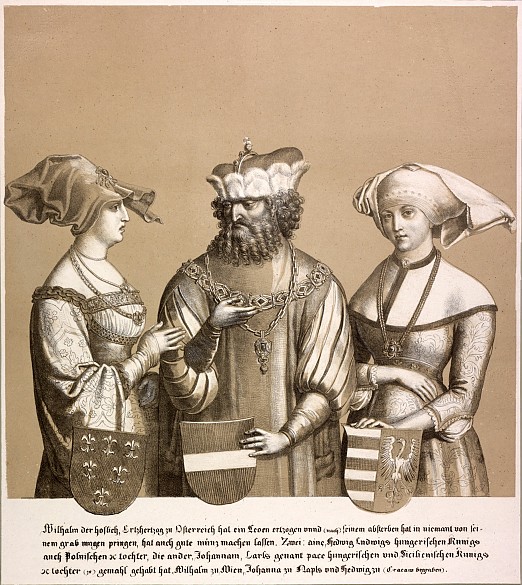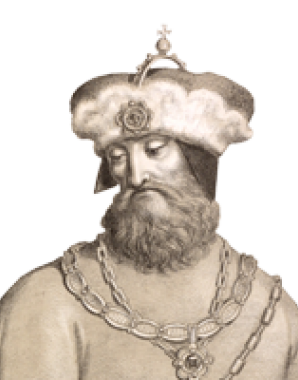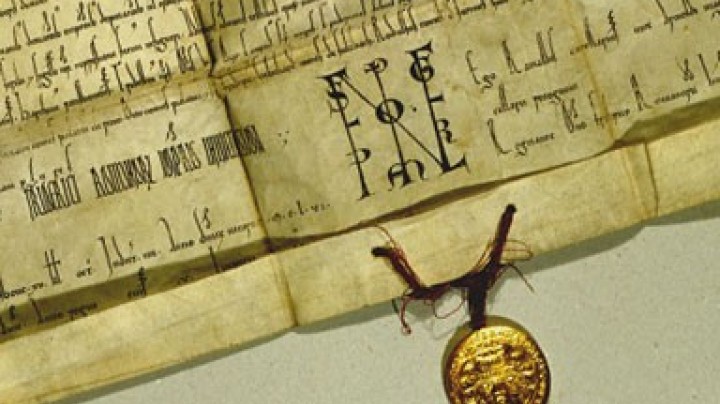William: Marry in haste, repent at leisure
William was the eldest son of the marriage of Duke Leopold III, the founder of the Leopoldine branch of the dynasty, and Viridis Visconti. Leopold had already made his son part of his plans for an advantageous dynastic union at an early age.
At the age of ten, the young boy was betrothed by his ambitious father to Hedwig (Jadwiga) of Hungary, daughter of the Hungarian king Louis I the Great (Lájos I Nagy) from the House of Anjou. Louis briefly united the crowns of Hungary, Croatia and Poland in one person. One of Duke Leopold’s aims with this planned marriage between his son and one of Louis’s daughters was to establish a claim on the inheritance after the foreseeable extinction of the Anjou dynasty. The scheme was also rooted in the rivalry with the House of Luxembourg, as Hedwig’s elder sister Mary had recently been married to a son of Emperor Charles IV.
Hedwig played a decisive role in the turmoil surrounding the succession to the Polish throne, being crowned queen at the age of eleven with the support of the majority of the Polish nobility. William was merely given the part of an uninvolved supernumerary. He was not even allowed into the Wawel, the royal castle at Krakow, and had to flee head over heels when the situation became life-threatening for him. Although Hedwig had initially insisted on adhering to the betrothal with William, she eventually had to bow to the will of the nobility by marrying the Lithuanian grand duke Ladislaus Jagiello, thus founding the Grand Duchy of Poland-Lithuania. Subsequently Hedwig became an important figurehead for the Polish nation and was canonized in 1997.
Although the circumstances surrounding the dissolution of the betrothal were very embarrassing for William, he remained true to his promise of marriage and refused to marry anyone else. It was not until the early death of Hedwig in 1399 that he felt absolved from his vows.
His choice fell on another bride from the widely ramified House of Anjou, Joan of Naples (1344–1387), daughter of King Charles III of Naples of the Anjou-Durazzo line. The couple were married in 1401, but by 1406 William was dead and the marriage remained childless. His young widow followed her brother onto the Neapolitan throne in 1414. She attempted to consolidate her controversial reign by concluding a contract of inheritance with the House of Aragon which she later rescinded, and act that led to bloody wars for the inheritance of this southern Italian kingdom.













